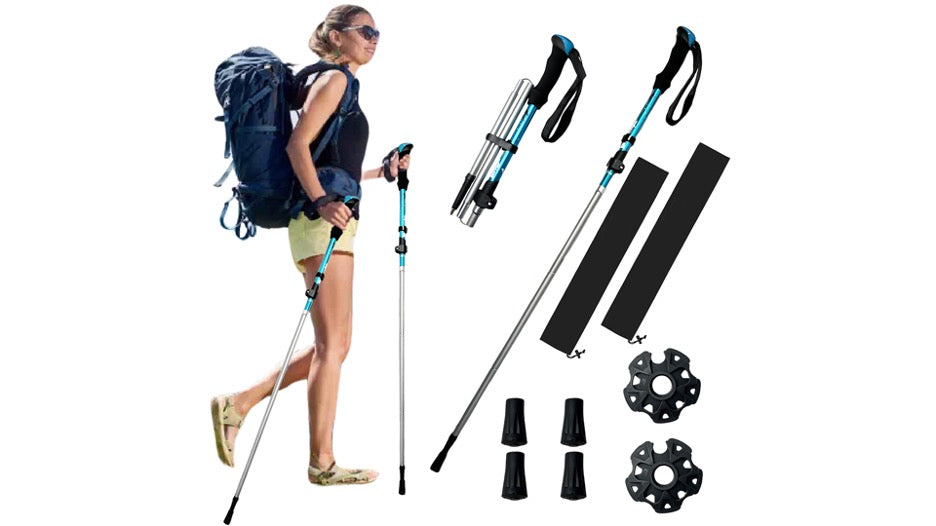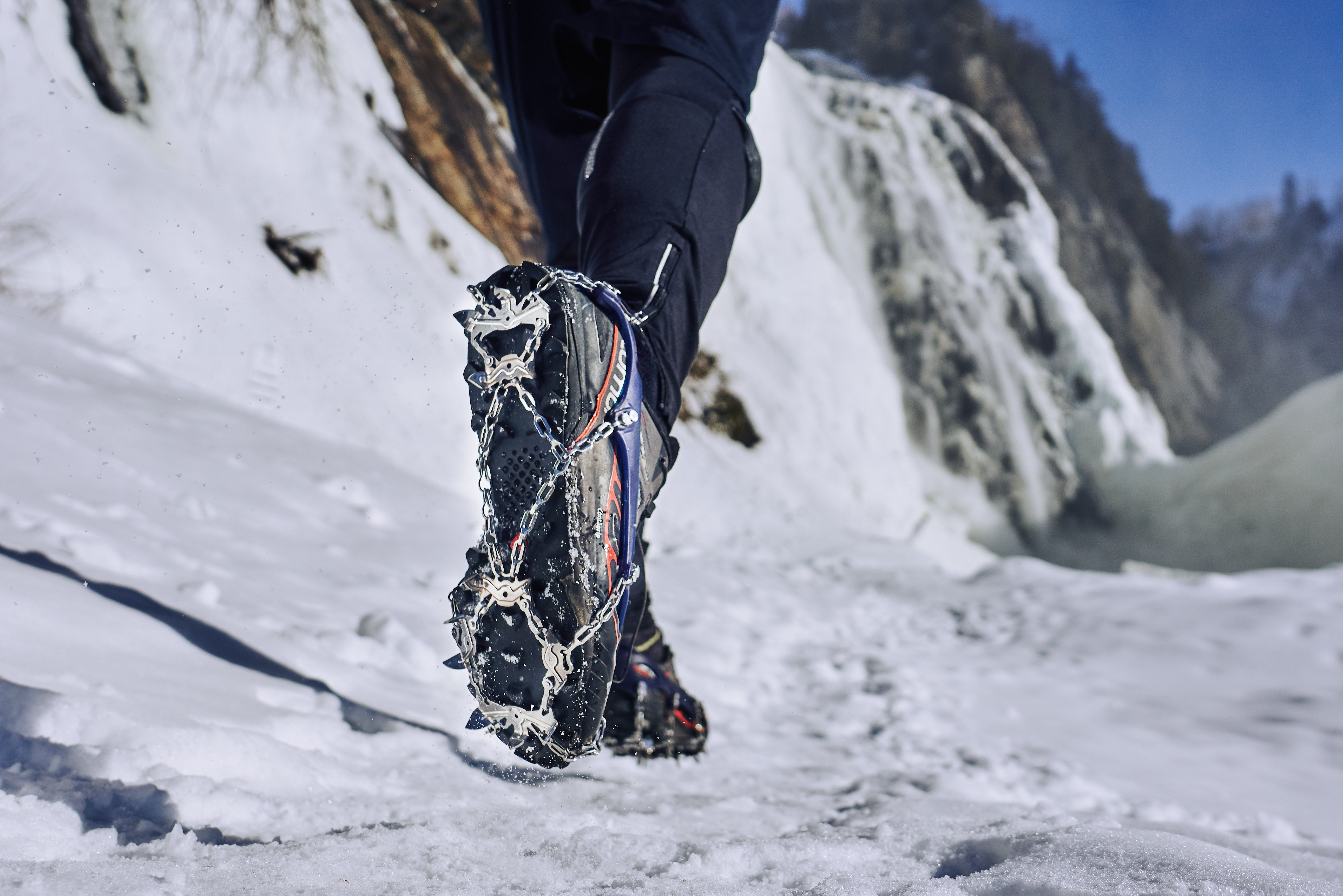Hiking poles are a game-changer for outdoor enthusiasts, providing increased stability, better balance, and reduced stress on your joints, especially during long or challenging hikes. With so many types on the market, including collapsible hiking poles, folding hiking poles, and traditional hiking sticks, choosing the right ones can feel overwhelming. However, by understanding the factors that influence your choice, you can find the perfect hiking poles to match your specific trail needs.
1. Consider Your Hiking Terrain
The type of terrain you’ll be navigating plays a major role in determining which hiking poles are best for you. The poles you select should cater to the challenges your chosen trails present, whether you’re tackling flat paths or rugged inclines.
For Flat Trails: If you're hiking on smooth, flat trails, you can get away with basic, lightweight poles. Collapsible hiking poles are a fantastic option here, as they are compact and easy to adjust, yet provide enough stability for easy terrain. A simple aluminum or carbon fiber model will be sufficient.
For Steep and Rocky Trails: Steep inclines or rocky trails demand more from your hiking poles. Poles with an anti-shock system can help absorb the impact on your knees and joints as you climb up or descend tricky paths. Adjustable folding hiking poles can be beneficial because you can change the length to fit the slope or your comfort level. Also, a sturdy material, such as aluminum or composite, ensures your poles hold up against rugged conditions.
For Snow and Ice: When hiking in snow or icy conditions, having larger baskets on your poles is crucial. Collapsible hiking poles with removable baskets will prevent the poles from sinking too far into soft snow. For icy surfaces, look for poles with carbide tips for better grip and traction.
For Off-Trail Hiking: If you’re venturing into off-trail, backcountry terrain or dense forests, hiking sticks or poles with larger baskets and extra stability will give you the control you need. Adjustable poles, like folding hiking poles, are also handy here, as they allow for quick adjustments depending on your terrain.
2. Understand the Different Materials
The material of your hiking poles significantly impacts their weight, durability, and overall performance.
Aluminum: Aluminum is a common material in hiking poles due to its durability and cost-effectiveness. These poles are sturdy enough for most trail types and are typically more affordable than their carbon fiber counterparts. If you’re just getting into hiking, collapsible hiking poles made from aluminum offer great value without compromising too much on weight.
Carbon Fiber: Carbon fiber poles are known for being lightweight and strong, making them ideal for long-distance trekkers or those who need to conserve energy on the trail. They do, however, come at a higher price point. Carbon fiber hiking poles, like folding hiking poles, are particularly beneficial for hikers who prioritize lightweight gear and don’t need extreme durability.
Composite Materials: Composite materials, which combine carbon fiber with other materials like fiberglass, are often used in mid-range poles. These poles aim to strike a balance between weight and durability, offering both strength and flexibility. This is perfect for those who want a compromise between lightweight performance and cost.
3. Determine the Right Length
Choosing the right length for your hiking poles ensures that you’ll have optimal comfort and performance on your hikes. The correct length will depend on both your height and the terrain you’ll be covering.
Adjustable vs. Fixed-Length Poles: If you need flexibility, adjustable poles like collapsible hiking poles are ideal because they allow you to change the length based on the trail. For example, when climbing steep hills, you might shorten the poles, and when walking on flat ground, you can extend them for more comfort. Fixed-length poles are simpler and lighter but don’t offer the same versatility as adjustable options.
Height Considerations: To ensure your poles are the right length, when standing straight, your elbows should bend at a 90-degree angle when gripping the poles. If you’re unsure, you can base the length on your height. As a rough guide, for a person around 5’4” to 5’7”, poles between 110 and 120 cm should work, but it’s best to test them out if possible.
4. Look for Comfortable Grips
The grip on your hiking poles is another key factor to consider. A comfortable grip can make a significant difference, especially during long hikes. Poor grips can lead to blisters and discomfort, so choose the material and design that works best for you.
Cork Grips: Cork grips are breathable, ergonomic, and mold to your hand over time. They’re particularly good for absorbing moisture and sweat, making them ideal for warmer weather. If you hike frequently, cork grips will become more comfortable to use.
Foam Grips: Foam is lightweight and comfortable, offering good moisture-wicking properties. It’s often used on collapsible hiking poles and folding hiking poles for a balance of comfort and weight. Foam can absorb sweat and is a great choice for hikers looking for an affordable and effective grip material.
Rubber Grips: Rubber grips are durable and give you a secure hold, especially in colder weather. They are typically seen on hiking poles designed for challenging conditions, but they may become slippery if your hands sweat a lot. These are a solid option for shorter hikes in cooler climates.
5. Consider Additional Features
While basic functionality is important, there are several additional features that can enhance your hiking experience.
Anti-Shock Systems: If you’re worried about the impact on your joints while descending, especially on steep trails, consider poles with an anti-shock mechanism. These systems reduce the shock when the poles hit the ground, minimizing strain on your knees and elbows. This feature is especially useful for long hikes or challenging terrain.
Baskets: Larger baskets are essential for preventing your poles from sinking into snow or soft ground. Many collapsible hiking poles come with removable baskets, so you can easily switch between smaller ones for rocky trails and larger ones for snow-covered paths.
Locking Mechanisms: Different poles come with different locking mechanisms, including twist-locks, lever-locks, and press-button locks. Twist-locks are common on collapsible hiking poles, but lever-lock mechanisms provide quicker adjustments and are often found on folding hiking poles. Choose one that feels secure and easy to adjust.
6. Budget and Durability
Hiking poles can range from budget-friendly models to high-end, premium options. Collapsible hiking poles are often priced more affordably than fixed-length poles, but both types come in a variety of materials and features. Consider how often you’ll use the poles and whether durability is more important than cost. If you’re hiking regularly, investing in quality poles—like folding hiking poles with durable materials—can make a big difference.
Conclusion
Choosing hiking or trekking poles that match your trail needs is a matter of understanding your terrain, material preferences, grip comfort, and additional features. Whether you opt for collapsible hiking poles, folding hiking poles, or more traditional hiking sticks, the right choice will enhance your hiking experience, reduce joint stress, and improve your balance and stability on the trail. Take the time to explore your options, and you’ll find the perfect poles to support your adventures.





Leave a comment
All comments are moderated before being published.
This site is protected by hCaptcha and the hCaptcha Privacy Policy and Terms of Service apply.